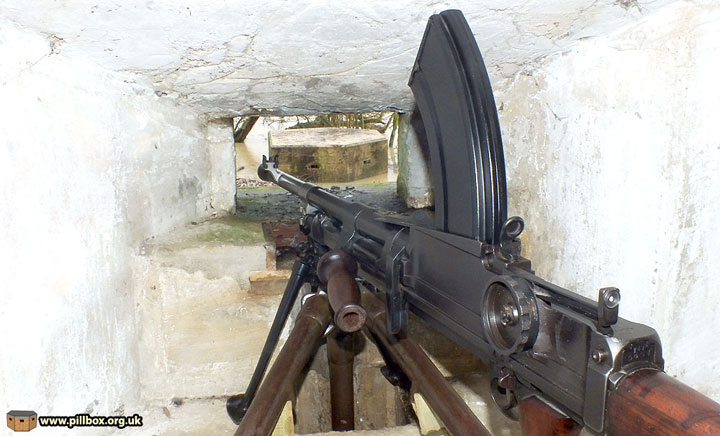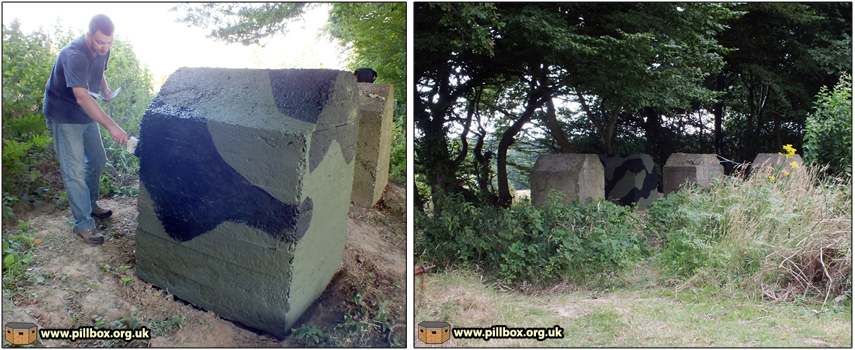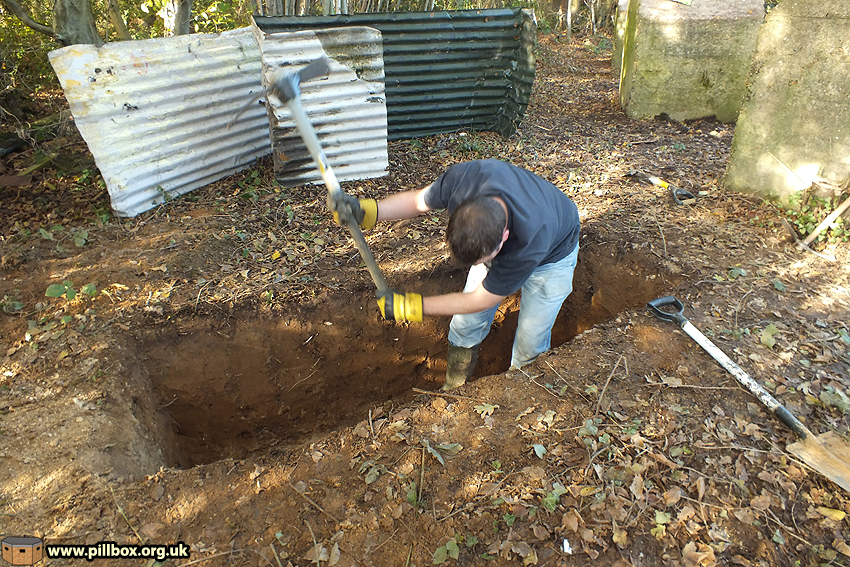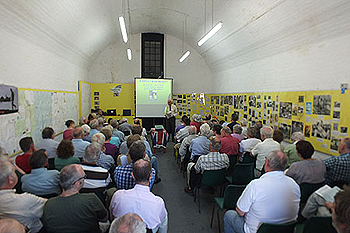Methodology
Posted: 20 April 2016
Methodology is central to what I do and is constantly evolving. This page discusses key elements of how it all fits together.
- The Jigsaw Problem
- Information and Communications Technology
- Primary Sources
- Archaeology
- Presentation of research
1. The Jigsaw Problem
There are many considerable problems in this sort of problem; the jigsaw metaphor below will explain what I'm up against more efficiently than a lengthy text description.

The jigsaw box may be tongue-in-cheek and cast a negative view of what I'm trying to do, but all of it is true! However, my methodology goes a long way towards coping with some of these pitfalls.
2. Information and Communications Technology
The fabric of the project is held together by ICT; I honestly do not know how this project could ever function without it! At the heart is this website driven by a database full of information relating to the project and its area of study.
Metadata
A key concept of the project is resource description. By "resource" I mean any entity that can be described/quantified. Resources can include books, maps, photographs, documents, people, an armoured division, a visit to an archive, an archaeological excavation, a website, a pillbox, a museum, a document extract, an event, a grid reference, a 3D computer model, an artefact, a blog entry, a folder of my fieldwork notes or an Irish Terrier called Spurgin. (Seriously!)
Metadata is defined as "data about data", so my database is essentially a collection of records that describe resources. I have based my data structure on the Dublin Core Metadata Initiative (DCMI), with the addition of a few extra elements specific to my research.
In most cases a record simply describes a resource (e.g. a book), incorporating useful keywords and indexing terms, but some records are the resource in themselves. For example, the content of this webpage is stored in a database record.
Database
The project's data is stored within a searchable structure, essentially a relational database. This allows any resource associated with my research to be described and associated with any other resource. For example, a record describing an air raid could have the following format, each bullet point representing a database record:
- Air raid
- Geospatial data (grid reference etc)
- Military units involved
- People/casualties/graves
- Sources that describe the raid (documents/books/people/photographs)
- Archaeological evidence
- Relevant structures (anti-aircraft gun emplacements, air raid shelters)
- My fieldwork notes/photographs of the site
- A blog entry of mine regarding the raid
In some cases the above example could also see the raid broken down into individual bomb incidents too.
3. Primary Sources
My research was heavily influenced by the Defence of Britain Project and the Defence Areas Project. The former identified the presence of largely overlooked documentary resources in the National Archives, while the latter project sought to utilise them with a focus on 67 areas.
Having been actively researching primary sources since 2006, I have come to realise that much of what is supposedly "known" about the Second World War in East Sussex is based upon local legend, misinterpretation and, in some instances, sheer fantasy. Secondary sources have proved to be of limited use and accuracy, which is why I have learned to largely avoid relying on them unless they are academically referenced and based on primary sources.
This is not to say that the documents I'm researching are 100% accurate; they may be incomplete or my interpretation of them may be wrong, but the key to the best interpretation of the landscape and what happened within it definitely lies within these primary sources.
The historian should, of course, appraise each source at his/her disposal and judge it on its own merits, but all too often the authors of secondary sources do not do this and will gratefully paste any tit-bit of "information" into their scrapbook. How does this happen? - It's because they don't go back to the primary sources!
The key thing about primary sources is that they were compiled at the time and, in the case of the war diaries and military files at TNA, they give locations of features and structures; this helps fieldwork to be targeted at areas of known activity.
4. Archaeology
Archaeology is vital to the project; although my early wanderings of the countryside photographing and measuring concrete could only be classed as "archaeology" under its broadest definition, things have changed significantly since I joined Sussex Military History Society in 2009.
Excavation
In 2011 SMHS branched out into military archaeology and we have undertaken some amazing projects! The photo below shows the SMHS excavation of a pillbox at Cuckmere Haven in October 2015. (This excavation actually topped my list of favourite moments in the project!)

Archaeological Reconstruction
Reconstruction is important even though we are dealing with events within living memory. The photo below shows a Bren gun set up on a tripod in a Type 24 pillbox at Blackham; an identical pillbox is seen in the line of fire. This demonstrates that both were sited to mutually defend each other. It was readily apparent just how much the shell-proof Type 24s were designed around the Bren gun and tripod.

Another reconstruction was the camouflage scheme SMHS applied to one of the dragon's teeth at Cripp's Corner in 2013. The scheme was based on techniques described in military manuals of the time and proved to be quite effective!

Whilst at Cripp's Corner we also dug a slit trench; it proved to be harder work than we had anticipated. We found we had to improvise with anchoring the revetment due to the local geology.

One final example is the dummy pillbox Paul Connor and myself built!

5. Presentation
There are myriad ways to present data; I'm forever being asked when I'm going to write a book as though it's the be-all and end-all. While getting a book or two out there is important (more on this below), there are other ways in which I've been presenting my research knowledge.

Talks
I've been doing talks for a few years now and have been a regular at the SMHS Study Days. These events have raised significant funds for a selected charity each year and have proved a worthy cause to be involved with. (Photo at right).
I also speak at local history societies. As I make my talks a two-way conversation, I get a lot useful information back from the audience!
3D models
This heading could easily have been included under the ICT or Reconstruction sections above, as my 3D models have multiple functions. However, they form the backbone of my talks and have proven to be a very powerful way of getting my audience to look beyond the obvious concrete they see in the landscape.
By importing 3D models into Google Earth, I can put missing elements of the battlefield back into the landscape and fly around it in order to analyse the defences.
You can read more about my 3D models in my blog including some video fly-throughs.

Email:
Blog Latest

Bishopstone reveals its pillbox secrets
18 October 2021

Pillbox or Observation Post?
10 June 2020

Uncovering the hidden secrets of a pillbox
8 June 2019

Review of 2018
31 December 2018

Wartime Christmas in East Sussex (2)
24 December 2018
Jargon-buster
Defence Areas Project
A study based on 67 areas identified from the Defence of Britain Project database as good examples of areas where significant portions the defences still survived, the study of which resulted in William Foot's Beaches, fields, streets and hills.
Defence of Britain Project
A large project run by the Council for British Archaeology (CBA) 1995-2002, collecting data on 20th century military structures submitted by a team of some 600 volunteers. The result was a database of nearly 20,000 records which is available online. The anti-invasion section of the database contains nearly 500 entries for East Sussex.
Pillbox
Generic term for a hardened field defensive structure usually constructed from concrete and/or masonry. Pillboxes were built in numerous types and variants depending on location and role.
Slit trench
Small, narrow trench designed to provide protection against shrapnel and other battlefield hazards. Technically distinct from a weapon pit (which was intended soley as a defensive position) slit trenches were also used as defence works.
SMHS
Sussex Military History Society
TNA
The National Archives (formerly The Public Records Office or PRO).

Type 24 pillbox
A six-sided (but not a regular hexagon) pillbox. The Type 24 is the most frequently seen pillbox in East Sussex, mostly along stop lines. It can be found in thin wall (30cm) or thick wall (1m) variants.
This site is copyright © Peter Hibbs 2006 - 2024. All rights reserved.
Hibbs, Peter Methodology (2024) Available at: http://pillbox.org.uk/about/244485/ Accessed: 27 July 2024
The information on this website is intended solely to describe the ongoing research activity of The Defence of East Sussex Project; it is not comprehensive or properly presented. It is therefore NOT suitable as a basis for producing derivative works or surveys!